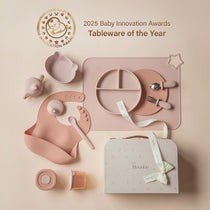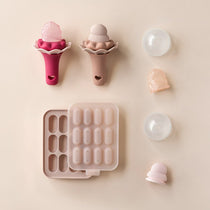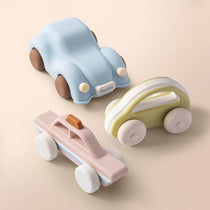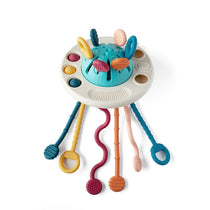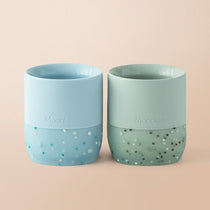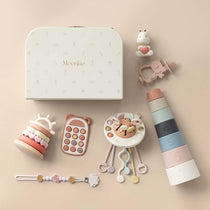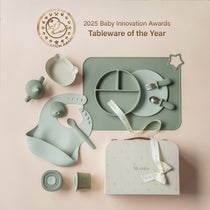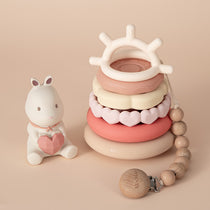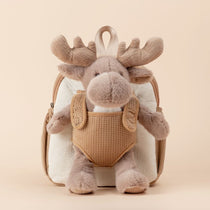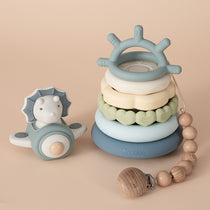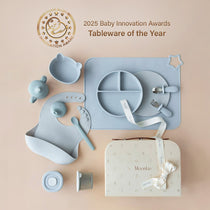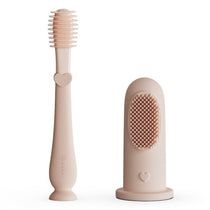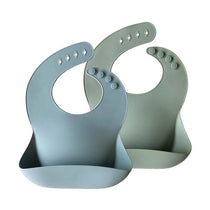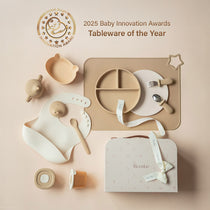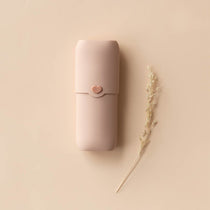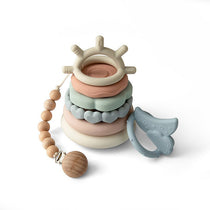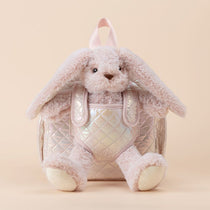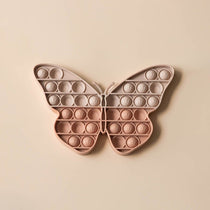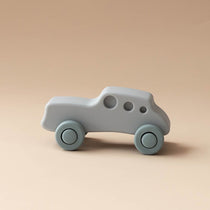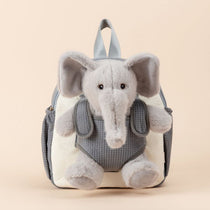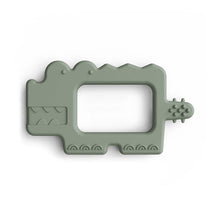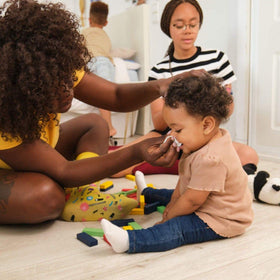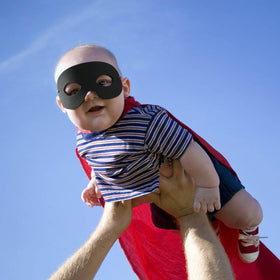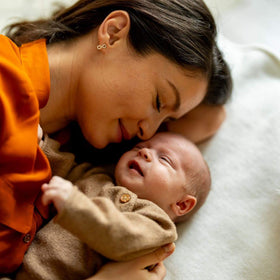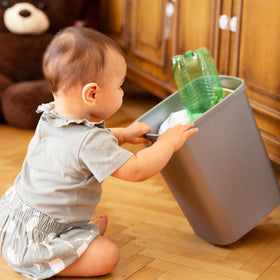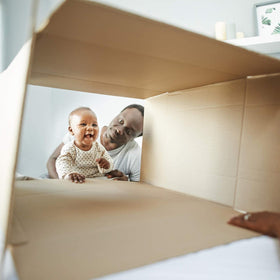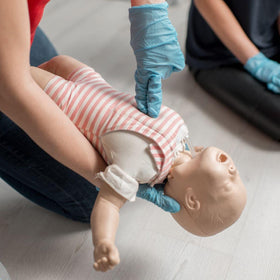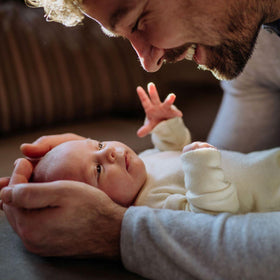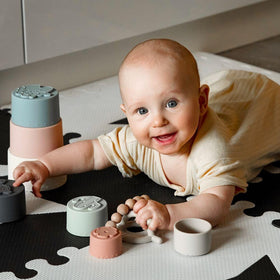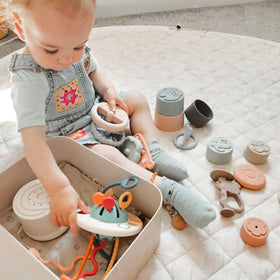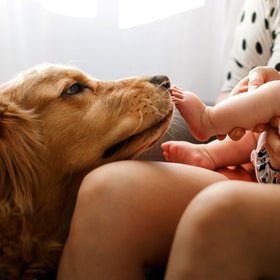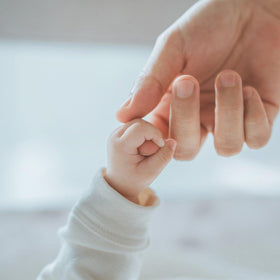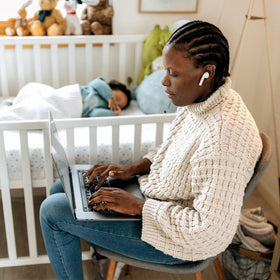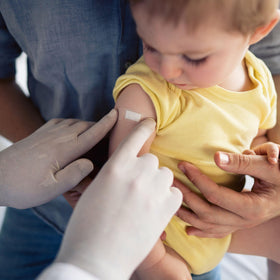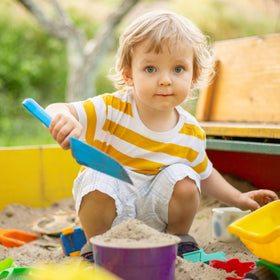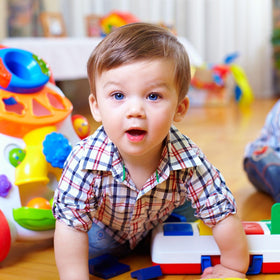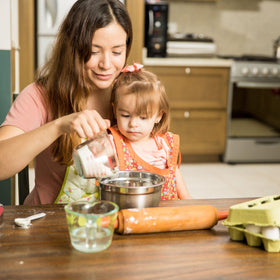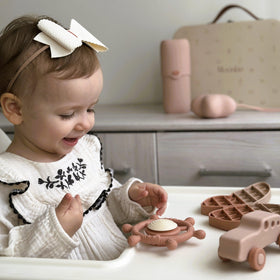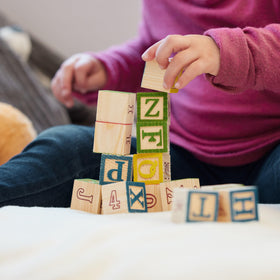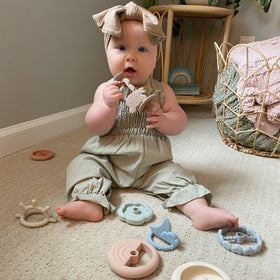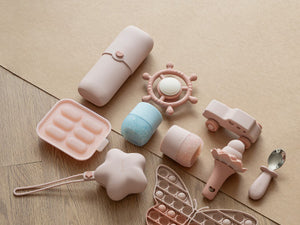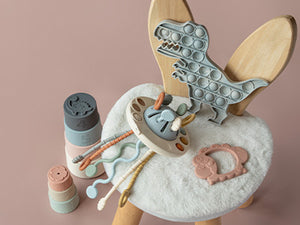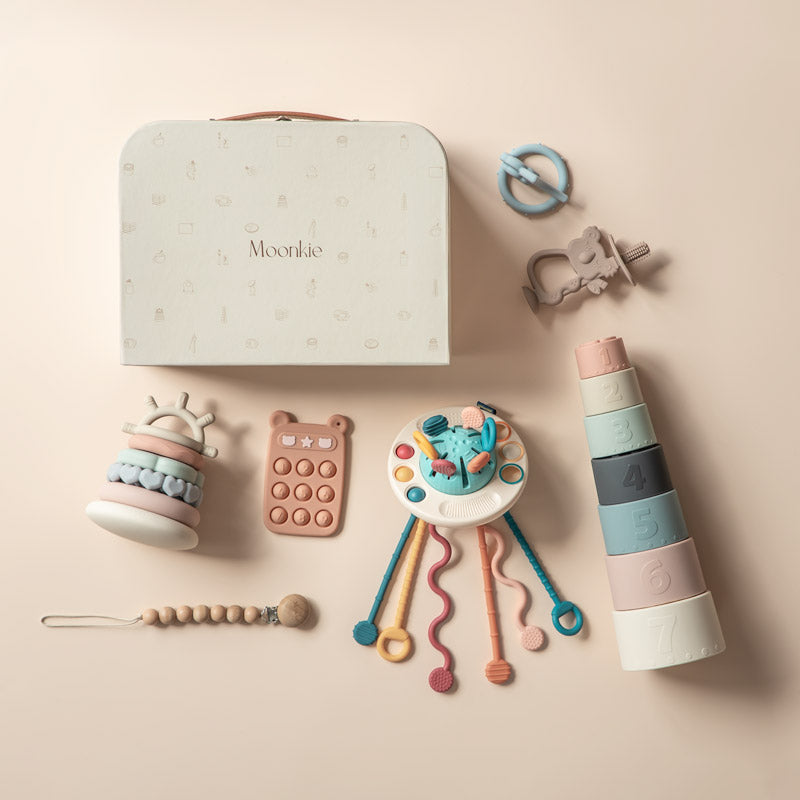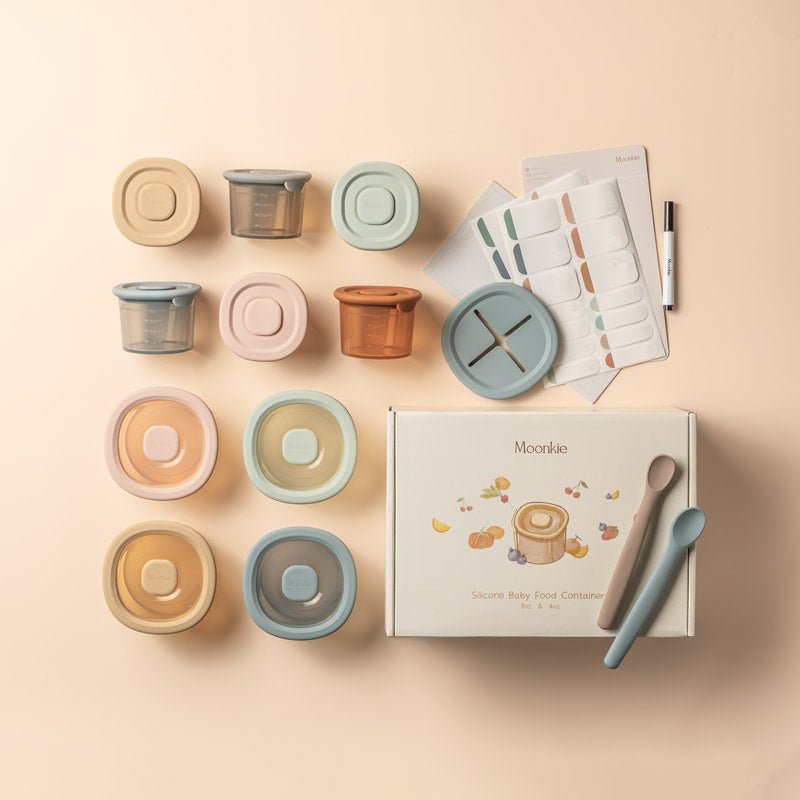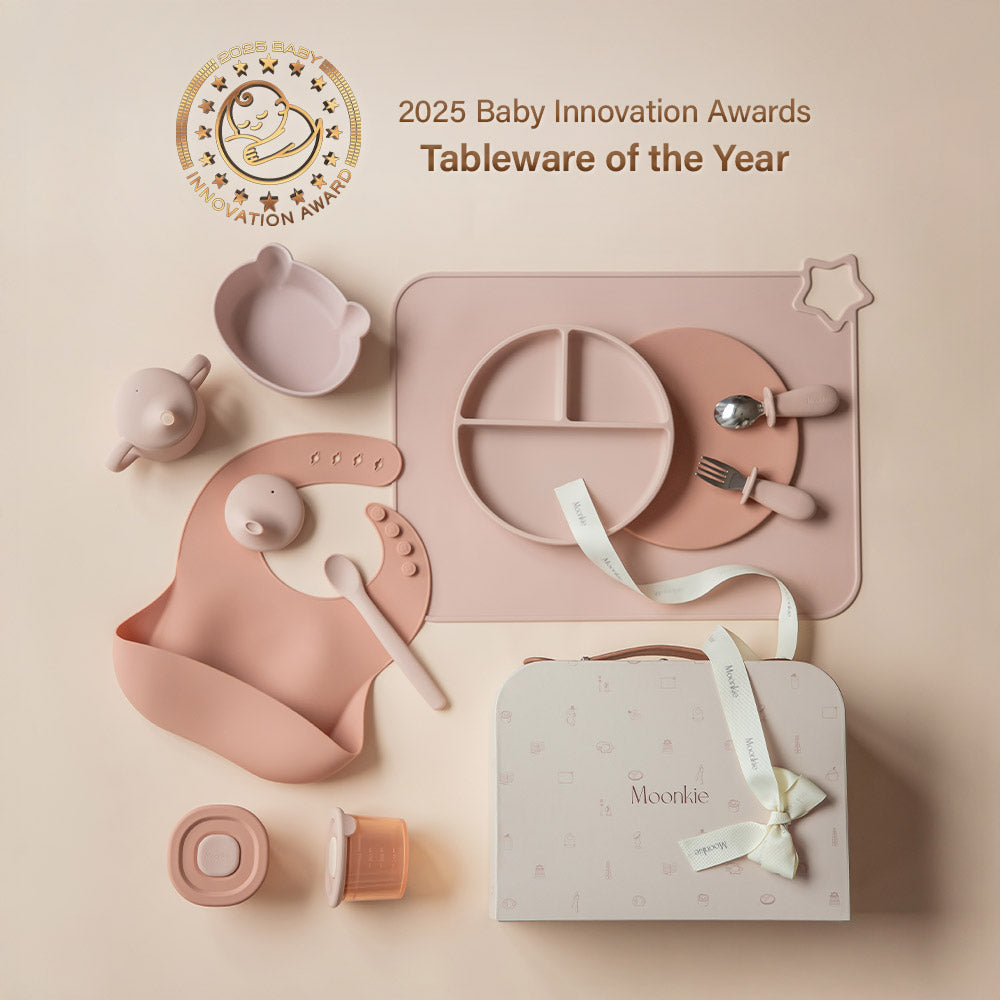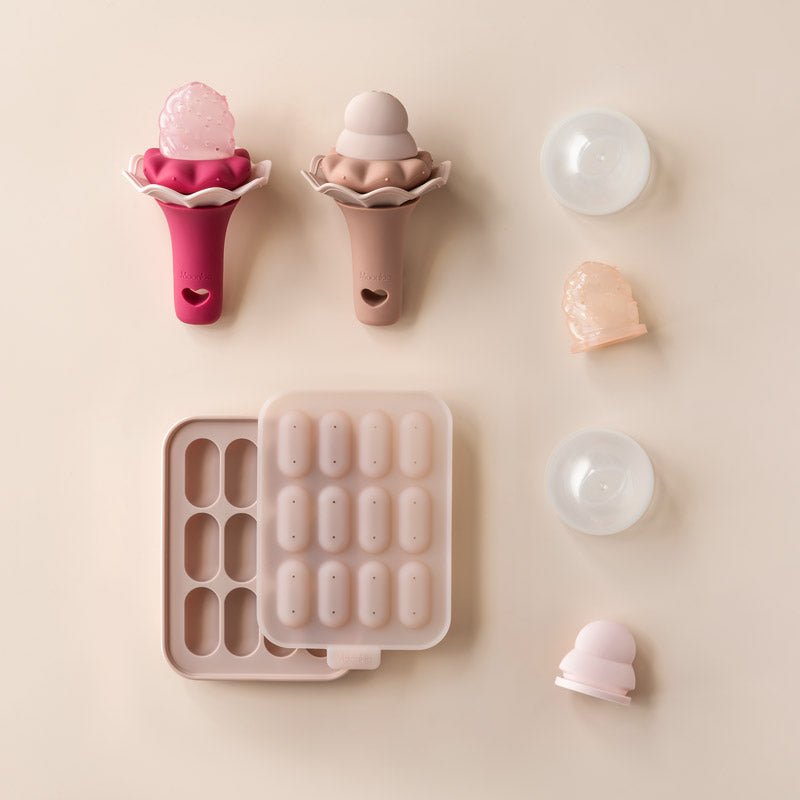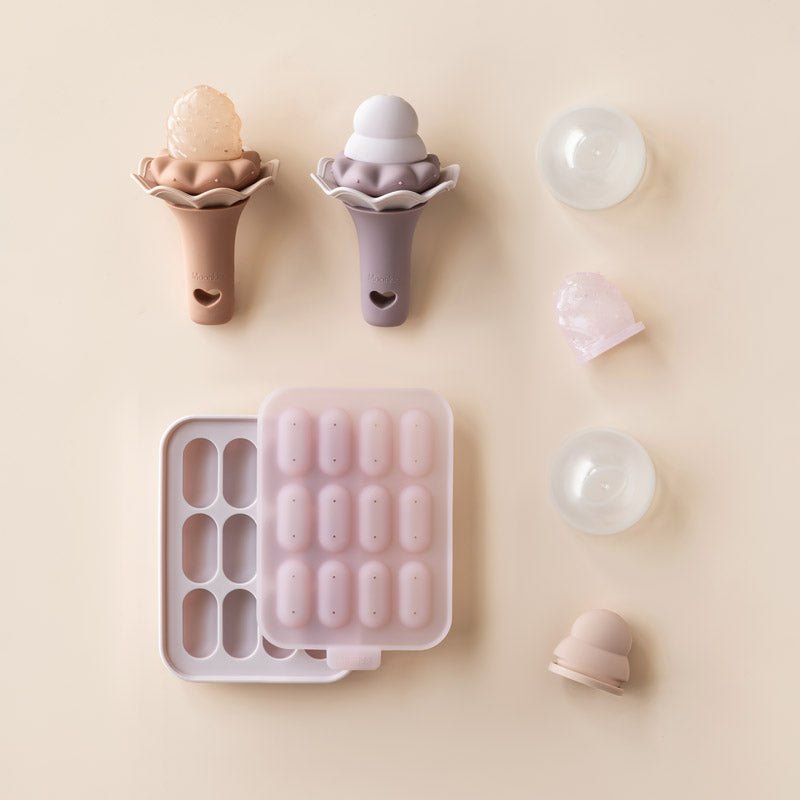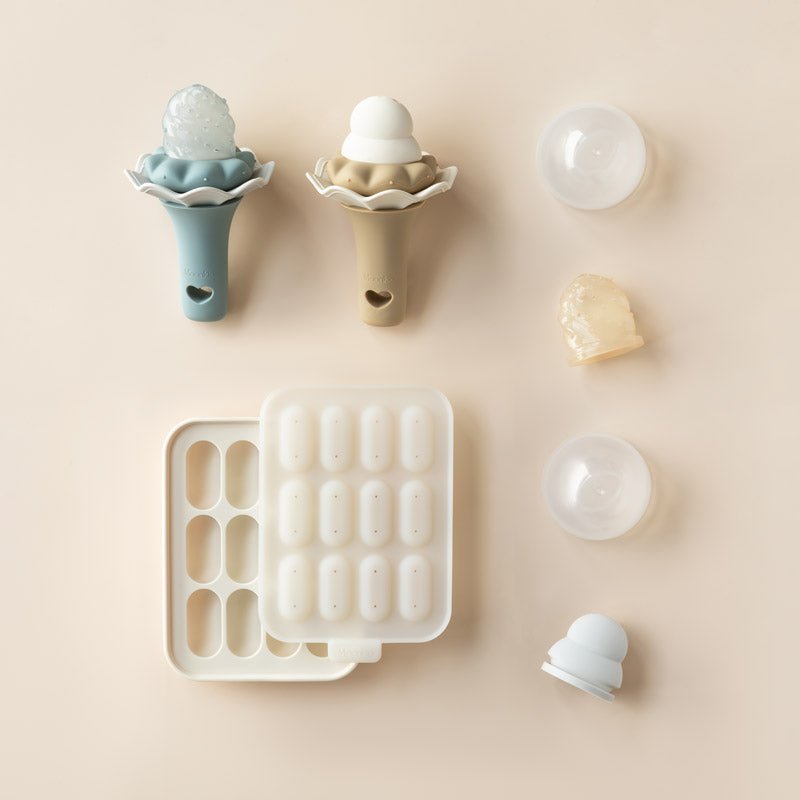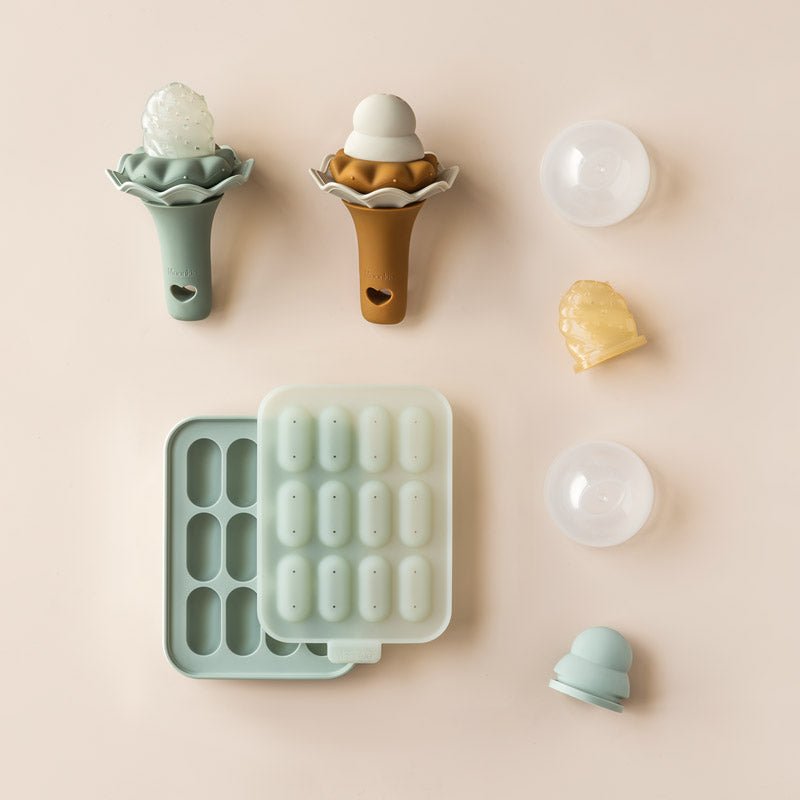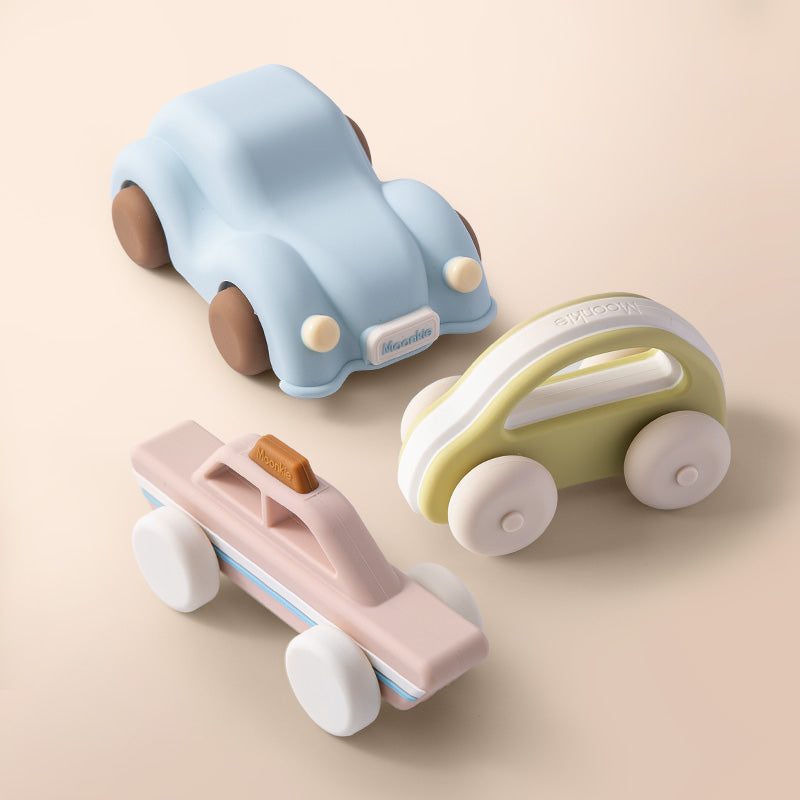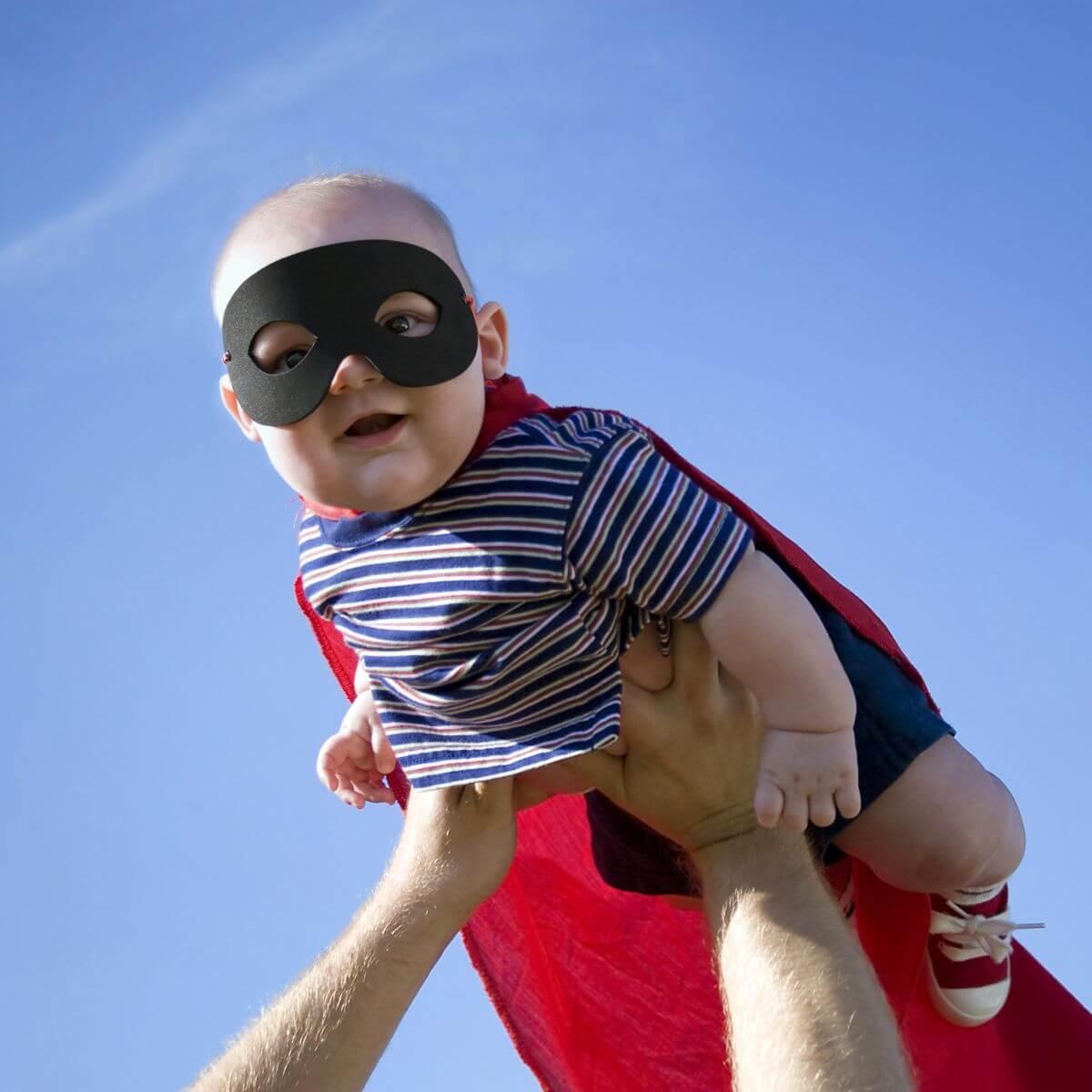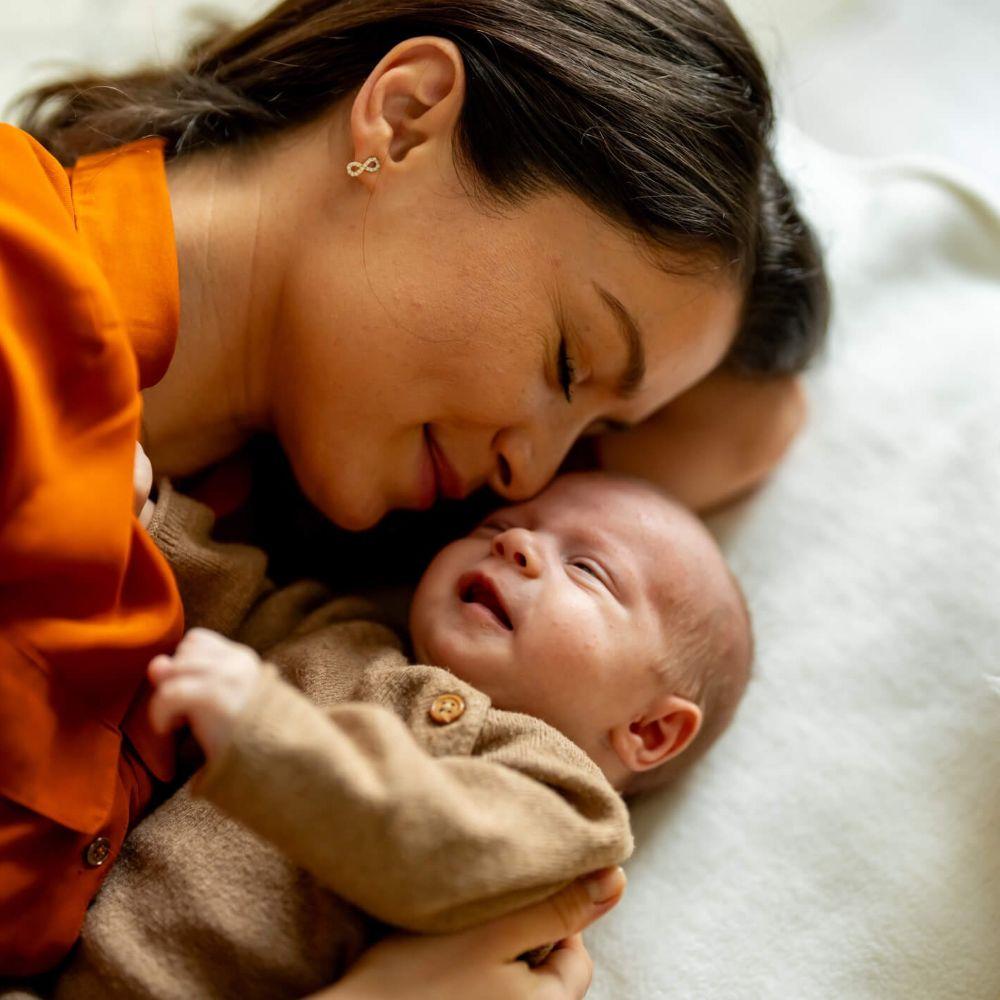Babies are incredible! Sure, they keep you up at night, so you may struggle to remember what your baby looked like that first week--let alone last week. But when you begin going through your photos, you'll see how much your baby has grown in just a few weeks!
The first year is a person's fastest development period. The average baby doubles in weight by four or five months old and triples it by twelve months old, gaining 10 inches in length by his or her first birthday (source). Moreover, all one's skills are rooted in that first-year skill foundation.
As impressive as the outward changes are, they don't hold a candle to what goes on inside. So, here is a list of surprising baby facts explaining why your little one needs to eat and sleep so much!
1. Newborns Have Around 300 Bones
Adults have 206 bones, but babies are born with around 300. How is that possible? Well, that birth canal is a tight squeeze, so having many smaller bones makes the passage into the world much easier for mom and baby (source).
After birth, those bones begin fusing together, but the transformation from 300 to 206 isn't complete until one's late 20s (source)!
Watch out for injuries and oddities as your little one's bones fuse. One of my babies was born with his skull already connected, which was unusual.
Observation and consistent measurements revealed that the plates of my son's skull had not fused yet; they were simply overlapped a bit. So, he was able to continue growing rapidly without a hitch.
2. Babies Don't Have Kneecaps
Well, at least babies don't have kneecaps like adults. Baby kneecaps are made of cartilage, which is a rubbery tissue. They begin ossification--the process that converts cartilage into hard bone--around 2 or 3 years old, but that doesn't finish until your baby is 5 or 6 years old (source).
So, all that crawling your baby does? Yeah, that's on rubbery cartilage kneecaps instead of bone. Perhaps that's one reason crawling doesn't hurt your baby much!
3. Newborns Don't Cry With Tears
Your newborn likely cries plenty, but have you noticed that no real tears are shed? Your newborn's lacrimal glands (the tear-making glands) are not ready for production until your little one is about two weeks old (source).
Even then, however, you will likely not see many tears until sometime between one and three months of age. So, no tears will be shed over spilled milk! (*buh-dum-ting!*)
4. A Baby's Brain Doubles in Size the First Year
Your baby's brain is about 35% of its eventual adult size two to three weeks after birth. From there, it doubles in size by a year old and achieves the 80% mark by age two (source).

Amazingly, your baby's brain develops at the rate of one million new neural connections every second in the first three years (source). By age 5, your child's brain will be 90% developed (source). No wonder there is so much hubbub around screen time these days!
5. Babies Have More Taste Buds Than Adults
Your baby can taste things way better than you can because she has more taste buds spread over more areas, including the back of the throat and tonsils (source)!
Your little one can also distinguish between flavors in breastmilk, which means the more varied your diet and the solids you introduce around Month 6, the more flavors your little foodie will enjoy!
Starting your baby with solid food is not a science, but knowing how to prepare food safely, what to put off, and how to discover allergies can be challenging. Read more in Introducing Baby to Solid Food: When to Start, What to Try, and How to Begin.
6. A Baby's Heart Rate Is Super Fast
Your heart rate is probably between 60 and 100 beats per minute. However, your baby's heart rate is much faster than that because he is working hard and growing!
Here is a breakdown of what to expect (source):
Age |
Resting Heart Rate |
0 to 1 month old |
70 - 190 beats per minute |
1 to 11 months old |
80 - 160 beats per minute |
1 to 2 years old |
80 - 130 beats per minute |
3 to 4 years old |
80 - 120 beats per minute |
5 to 6 years old |
75 - 115 beats per minute |
7 to 9 years old |
70 - 110 beats per minute |
10+ years old |
60 - 100 beats per minute |
Trained athletes |
40 - 60 beats per minute |
It is unusual for your baby's heart rate to spike and remain elevated for their age. Your little one may not be getting enough oxygen if her pulse is elevated at length with shallow, rapid breaths. If you notice your infant sucking in her trachea and sides quite a bit (labored breathing), take her to the ER.
Learn more about tracking your little one's heart rate, oxygen levels, and breathing at home in When It's More Than a Cold: RSV in Babies and Toddlers.
7. Newborns Recognize Their Mother's Voice
Babies can hear their mother's voice in utero, so when they are born, they already respond to her voice (source). Newborns can also pick up on their father's voice if they hear it enough.
Infants five months old and under can distinguish between familiar and unfamiliar female voices, but more recent research suggests they may not distinguish the voices of unfamiliar men (source). So, talk and sing to your little one often!
8. A Newborn's First Poops Are Not Smelly
You will be shocked at how much your baby can poop and pee. It's truly astounding. However, that first poop is an entirely different substance we call "meconium."
Meconium is a thick, tar-like black-green goop made of water, cells, mucus, hair, and other things your baby swallows in utero (source). Weirdly, it doesn't really stink! Your baby's gut doesn't have enough of the bacteria that makes poop stink yet.
When you begin breastfeeding your newborn, meconium will give way to yellow poop that definitely has a smell.
9. Infants Don't Breathe Regularly
As if you were not worried enough about keeping your baby alive, it's totally normal for your newborn to just stop breathing for 5 seconds and take several rapid breaths. This phenomenon is called "periodic breathing" and can last until around six months old (source).

Newborns have a lot to learn in those first months. Before birth, your little one didn't use those lungs, so it's a totally new skill! Some newborns may just forget to breathe while focusing on something or pause breathing to eat when they are super hungry.
It's not unusual until a baby pauses for about 20 seconds and starts to turn blue—that would be apnea. In this case, call 911 (source).
10. Babies Younger Than Three Months Cannot Taste Salty Flavors
Salt is incredibly useful and tasty, but we overeat it! The World Health Organization suggests that adults eat less than 5 grams of salt a day (just under a teaspoon), but the typical American diet goes well beyond that (source).
Babies younger than three months do not need salt to make their formula or breastmilk more tasty because they cannot taste it anyway. Ideally, you won't add much salt to her first solids either (source).
11. Babies Are Born with a Gap in the Skull
You may notice that your little one's head has a soft spot that moves with her pulse. Not to freak you out or anything, but that is a gap in the skull to your baby's brain. So, don't push on it!
That gap, or "fontanelle," is critical for making that squeeze through the birth canal easier and for making space for your baby's rapidly developing brain. It's totally normal!
First-time dads may be thrown for a loop with all these random baby facts. Help him find his footing in this parenting thing by suggesting 25 Questions First-Time Dads Ask About Babies.
12. Newborns Are Short-Sighted
Babies are not born with perfect vision--it was dark in that womb! Developing the ability to see clearly, distinguish colors, and track movement takes time. At first, your little one primarily focuses on things 8 to 10 inches from their face, which is mostly your face (source)!
By 4 months old, your baby's eyes learn to coordinate to follow moving objects and reach for them. From 5 to 8 months old, your baby continues to practice eye movement control and eye-body coordination skills, which require practicing depth perception. Your baby's world has now become three-dimensional (source)!
All the busy crawling, pulling up, standing, and cruising from 8 to 12 months further improves your little one's hand-eye coordination, depth perception, and seeing things at a distance.
You can further help your little one develop these skills through play and exploration. By 2 years old, these skills will be well developed (source).
13. Infants Automatically Hold Their Breath Underwater
Have you ever seen baby swim classes? They are a thing! Like most mammals, babies have a "diving reflex" that makes them hold their breath and slow their heart rate to conserve oxygen (source).
Simply splashing cool water on your baby's face will cue this reflex in the first six months. However, you will have to pay close attention to ensure your little one holds his breath after that because the automatic reflex wears off a bit by the first birthday.
14. Babies Prefer to Look Right
Newborns prefer to look right when laid down, and we don't really know why. Perhaps they prefer right-handedness, which is predominant in the general population (source).
Or, perhaps the parents' right-handed preference affects the way they are carried, nursed, changed, and laid down. Some babies have muscle tension on one side, causing them to lay more comfortably facing one way over the other.
My own babies all preferred to turn to the right, but I believe that is because I am staunchly right-handed in everything.
If your baby refuses to turn to the other side, ask your pediatrician about physical therapy, massage pointers, or a reference to a pediatric chiropractor.
15. Breastmilk Adapts to Your Baby's Needs
Breastmilk is liquid gold for your baby's needs and development. Not only does it meet your baby's nutritional needs, but it also protects your baby from infections and diseases and provides the antibodies needed to fight illness (source).
A few days after your baby was born, colostrum came in as a thick, yellow, sweet treat for your newborn. Colostrum is full of antibodies, good bacteria, and tons of other good stuff for those first few days (source).
When your baby is ready, your body will switch from colostrum to transitional milk, which is creamier with higher fat and lactose for quick growth. Around the one-month mark, your milk matures to a high-protein, high-lactose milk loaded with vitamins and minerals (source).
Mature milk changes slightly from feeding to feeding based on what you eat and what your baby needs. The amount you make is also determined by how much your baby eats.
The coolest part is that researchers have found that the leukocytes spike in your breastmilk when you or your baby are sick. When you or your little one recovers, those leukocytes fall back to baseline levels (source). So, your milk creates exactly what your baby needs to fight illness! How neat is that?
16. Human Babies Are the Only Babies That Smile at Their Parents
Human babies smile as newborns, but these are typically chalked up to gas movements. The first genuinely social smiles happen somewhere between 2 and 3 months old. However, other primate young don't seem to exhibit the same social smiles.
Minus smiles, though, and many gestures between infants and parents are similar to those between humans, chimpanzees, and bonobos. The major divergence in communication occurs between 1 and 2 years old when human babies begin to speak rather than rely solely on gestures (source).
17. Babies Don't Laugh Until Around Three or Four Months Old
Laughing is a learned behavior expected to develop around three or four months old. The fullest laughing and giggling ability will come at around six months old (source).

Contact your pediatrician if your baby is not laughing by six months old. Delayed emotional expression can be a sign of something unusual.
18. The Word "Infant" Makes Sense
The word "infant" originates from a Latin word meaning "unable to speak." Early on, this word was used for babies who couldn't yet speak, but its meaning seems to have progressively broadened.
The term stuck to young babies somewhere in Old French or late Middle English.
19. Birthmarks Are Common
Birthmarks are extremely common in babies, but roughly 10% of all babies will be born with a hemangioma birthmark that will probably disappear by their 10th birthday (source).
Despite their commonness, we don't fully understand how birthmarks are formed. Some seem to be genetic, while others form when blood vessels don't form properly. Other birthmarks can happen when skin color cells clump together or when parts of the skin overgrow (source).
If your little one has a birthmark, don't be surprised!
20. Baby Girls Are Born With the Most Eggs They Will Ever Have
In utero, a baby girl has millions of eggs, but that number drops to somewhere between 1 and 2 million at birth. Since a woman cannot make new eggs during her lifecycle, she will lose them over time through periods, aging, and injuries (source).
Here is a quick picture of just how quickly a female loses her eggs over time:
Age |
Egg Count Estimate |
20 weeks gestation |
6 - 8 million |
birth |
1 - 2 million |
11 - 12 years old |
300,000 - 500,000 |
32 years old |
120,000 |
37 years old |
25,000 |
52 years old |
<1,000 |
21. A Baby's Eyes Are Huge
If you think your baby has such adorably huge eyes, you are not dreaming. Well, it isn't your baby's eyes that are huge so much as your baby's proportions are somewhat cartoonish early on.

The average newborn has eyes about two-thirds of their eventual adult size, but the rest of the body has a long way to go to catch up. Those eyes undergo significant development and growth in those first months, but the odds are that they will appear large until your child goes to school (source).
22. Babies Distinguish All Human Language Phonemes During Their First Year
Yet another fascinating skill your little one develops in the first year is "universal listening." However, it is more accurate to say that your baby can hear all human language phonemes in the first six months and gradually focuses on the phonemes of your native language for the latter six months (source).
Still, universal listening is such a cool superpower! If you surround your child with two or more languages, you will not confuse her. She will adeptly pick up and experiment with each language as she develops her speaking skills.
All you have to do during that first year is ensure your baby gets plenty of input from each language. However, you will have to do a bit more in the toddler years to help your little one develop bilingual skills. Read more in Supporting Bilingual Toddlers: Tips for Raising a Multilingual Child.
23. Some Baby Reflexes Disappear
Babies are born with innate reflexes that help them survive. They are involuntary muscle responses to certain stimuli that eventually give way to intentional voluntary movement through typical development.
Here are a few reflexes newborns have that eventually disappear (source):
Rooting reflex: helps a baby find and latch onto a nipple to eat
Sucking reflex: helps your baby get milk and swallow
Moro reflex: extending arms and legs suddenly when the head isn't supported, a loud noise occurs, or sudden movement happens
Tonic neck reflex: helps a baby develop muscle tone, balance, and hand-eye coordination
Stepping reflex: helps your newborn wiggle to your breast after delivery
Babinski reflex: makes your baby fan her toes out when the bottom of her foot is stroked
Grasping reflex: helps your baby hang on to your finger or hair
24. A Newborn's Hair and Eyes May Change
The hair and eye color your baby is born with may change over the first few months and possibly even the first few years of life. Most babies born with brown eyes will likely stay brown, but blue eyes seem to change more readily to hazel, green, or brown by age two (source).
That shock of hair your newborn was born with will likely fall out and grow back at a different shade. Some babies born blonde gradually grow dark hair, and some babies born with dark or black hair may eventually become lighter browns or blondes.
Changes in hair color often result from changes in melanin production. More melanin results in darker hair, while less melanin produces lighter hair. Also, lots of sun exposure can lighten hair (source).
25. Babies Can Learn Sign Language Faster Than Spoken Language
Spoken language has many moving parts to master (literally), but sign language—or simple signs clearly associated with certain responses and outcomes—is far easier to produce and remember. 
Some studies show that babies can intentionally use a sign around 8 or 9 months old (though some babies may start even earlier than that) (source). Just for comparison, a baby's first words typically come between 10 and 14 months old (source).
Teaching signs from just a few months old is most effective when the outcome or your response is clear (as in, "When I do this, my mommy will give me that."). Some easy signs to teach your little one include:
Pick me up.
More.
All done.
Yes.
No.
Help.
Please.
Eat.
Drink.
Milk.
Thank you.
In a Nutshell
Babies are incredible! Knowing these random facts about your baby is entertaining in discussions and trivia games, but it also helps parents appreciate what their precious little ones are going through. Besides, if adults were growing and developing as rapidly as infants, we would probably be superheroes!



